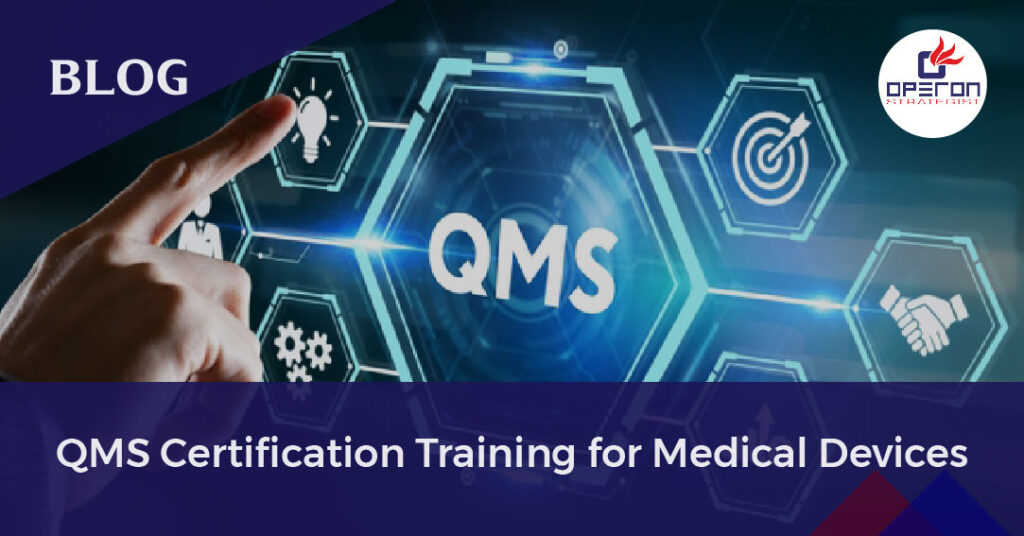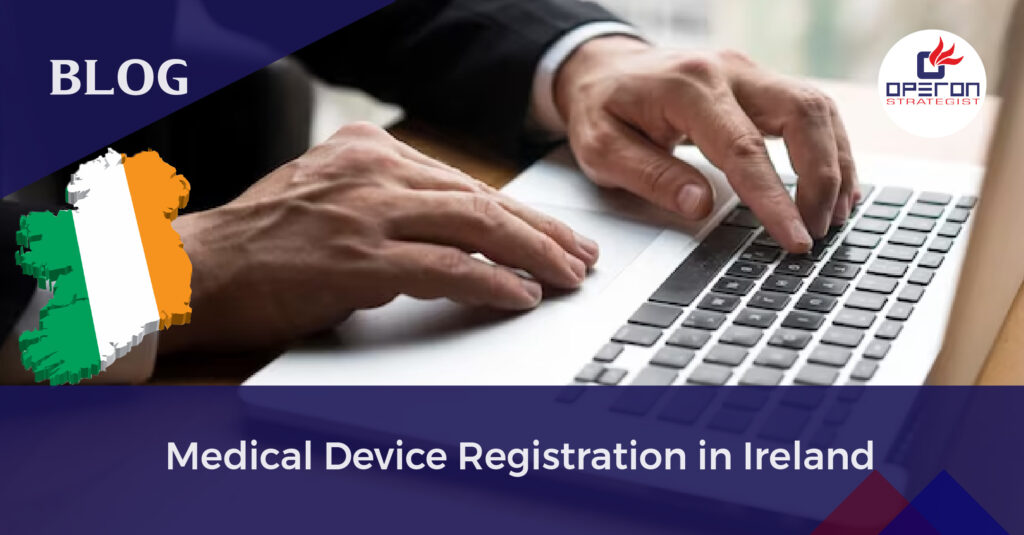Introduction of QMS Certification Training for Medical Devices:
Many people believe that obtaining a QMS (quality management system) accreditation is essential for a medical device company to remain compliant. A QMS certification is a regulatory requirement that the FDA (Food and Drug Administration) and ISO auditors see as basic. It increases product quality and welfare while ensuring ISO and FDA compliance.
A quality management system (QMS) is commonly defined as a set of processes that define the standards and constraints that must be followed in the process of structuring, developing, and manufacturing medical devices. A Quality Management System (QMS) collects data with the primary goal of meeting the needs of customers and expediting their fulfillment.
Looking For a Medical Device Regulatory Consultant?
Let’s have a word about your next project
FDA 510k Clearance and Premarket Approval for Medical Device:
The traditional way for developing a quality management system is to adhere to guidelines, occasionally resulting in the direct implementation of standards outlined in ISO 13485: 2016 and other quality system requirements and regulations.
QMS is a critical component of your business. How you work. How you work. The goal of how your firm structures and manufactures medical devices. The objective of how an organization addresses product and procedural difficulties. The objectives of ensuring product and procedure quality are fundamental and a component of your core. Additionally, how patient security and product liability are important.
Operon Strategist serves as a consultant for FDA 510(k) processes, assisting clients in registering their Small Business Units (SBUs) where applicable. They manage the removal of product testing requirements, oversee dossier creation, address inquiries, and ensure completion of all requisite activities.
Documentation Requirements for QMS Certification Training:
The documentation should be associated with identifying forms and maintaining the necessary records to demonstrate whether or not these procedures are being followed. Documentation is the goal proof, demonstrating that the requirements are being met.
- Quality Manual
The important part of the QMS certification training is the Quality manual. The regular methodology for fulfilling the Quality manual is making a lengthy policy – a level document that separates different segments of ISO 13485 and portrays from a significant level how the medical device organization tends to the clauses.
The Quality manual must meet the accompanying criteria
- Describe the scope of your QMS.
- List or allude to the techniques involving the QMS.
- Describe collaborations of QMS processes.
- Outline the structure of QMS documentation.
2. Medical device file
Each medical device type or device family should have a medical device document.
The substance of medical device records will be incorporated.
- Description of the product, including the intended use and signs for use.
- Product labeling and guidelines for use.
- Specifications for the product.
- Specifications for measuring and checking.
- Specifications and methods for product establishment.
- Procedures for product overhauling.
3. Document control
Documentation is an essential component of a quality management system. A document control procedure defines your organization’s document control requirements. This includes ensuring that the documents are reviewed and approved before execution, intending to revise documents and distinguish changes, and ensuring that current adaptations are accessible for use.
4. The procedure of design and development
Medical device design and development is the primary stage for its growth. A poorly constructed and described medical device cannot meet administrative requirements and reach the market.
On the other hand, if the product passes compliance, it will fail to pass on the described usefulness and advantages by the needs of the business sector and will suffer the negative consequences of a smaller market gathering when compared to well-characterized items.
Medical device design and development begins with ideation and the arrangement of an idea, which, if found to be financially and clinically appropriate, is then planned, designed, and prototyped.
After examining another medical device, the next stage in its development is medical device design. This is the most important step in the creation of medical devices since an improper design may render them ineffective or even harmful.
Management Controls
The Management Controls subsystem achieves various tasks. To begin with, it allocates sufficient resources to tasks within your quality management system. Examples of enough resources include qualified individuals to carry out their given tasks; equipment and materials, both those that comprise the item and those required to manufacture it; and, finally, sufficient offices that ensure adequate space for manufacturing.
The second rationale for the Management Controls Subsystem is to ensure that a suitable and effective quality system is established. According to 21 CFR 820.40, producers must ensure their manufacturing procedures and documents are managed. Manufacturers must maintain control over these operations to ensure they consistently produce the desired results. Furthermore, makers should ensure that the device being used has aligned, inspected, and tested.
The final step in the Management Controls Subsystem is to screen the quality system and make any necessary modifications. The management representative ensures that the quality system is being monitored and that any significant modifications are implemented based on data obtained from frequent administration audits.
Microbiology
Medical microbiology is a large subset of microbiology used in medicine and is a branch of medical research concerned with the prevention, diagnosis, and treatment of incurable diseases. To assist you in implementing the necessary procedures outlined in ISO 13485:2016, as well as protect the patients ISO 13485 is backed by standards that cover specific needs, such as
- The use of appropriate controlled production techniques that establish a consistent product. Bio-burden before the sterilization treatment (for example, use of clean rooms)
- Validation and control of key packaging operations to ensure the integrity of the sterile pack.
- Validation and control of key packaging operations to ensure the integrity of the sterile pack.
Facility and Equipment Control
Infrastructures consist of the basic facilities and equipment required to understand the medical device or provide a related service. Infrastructures should provide suitable circumstances and assistance in carrying out the proper business requests and exercises, as well as in achieving the optimum congruence of medical device specifics and requirements: product, safety, and regulatory. As a result, they are identified with the medical equipment and have a direct impact on its quality.
The primary goal of the organization is to ensure the arrangement, accessibility, and manageability of infrastructure. Infrastructures include all of the procedures, applications, interfaces, and facilities required for the recognition of a medical device over an extremely long cycle stage, from design revisions to delivery, post-delivery exercises, and disposal. Overall, the ISO 13485 Standard requires to ensure the availability of appropriate infrastructures throughout the implementation process.
CAPA – Corrective Action Preventive Action
The CAPA management system is the foundation of any Quality Management System, particularly in the pharmaceutical and medical device industries. It serves as a foundation and catalyst for quality improvements. The CAPA System feeds the Quality System, which improves processes, procedures, organizations, and businesses in an organized, well-documented, and actionable manner.
A quality management system is a codified system that documents processes, methods, resources, and responsibilities for achieving quality policies and objectives in a company. A quality management system coordinates and directs an association’s activities to meet compliance, customer, and regulatory requirements while improving effectiveness and operational efficiency constantly.
Enhancing Regulatory Success With Operon Strategists:
At Operon Strategist, we specialize in FDA 510(k) process consulting, assisting clients in registering Small Business Units (SBUs) and navigating product testing exemptions, dossier creation, and query resolution with precision. Our comprehensive services extend to QMS training, seamless system implementation, and expert consultancy for ISO 13485 and ISO 15378. We also maintain rigorous compliance with 21 CFR Part 210 and 211 to uphold superior Quality Assurance standards. Contact us for more information.
- adminhttps://operonstrategist.com/author/admin-2/
- adminhttps://operonstrategist.com/author/admin-2/
- adminhttps://operonstrategist.com/author/admin-2/
- adminhttps://operonstrategist.com/author/admin-2/



